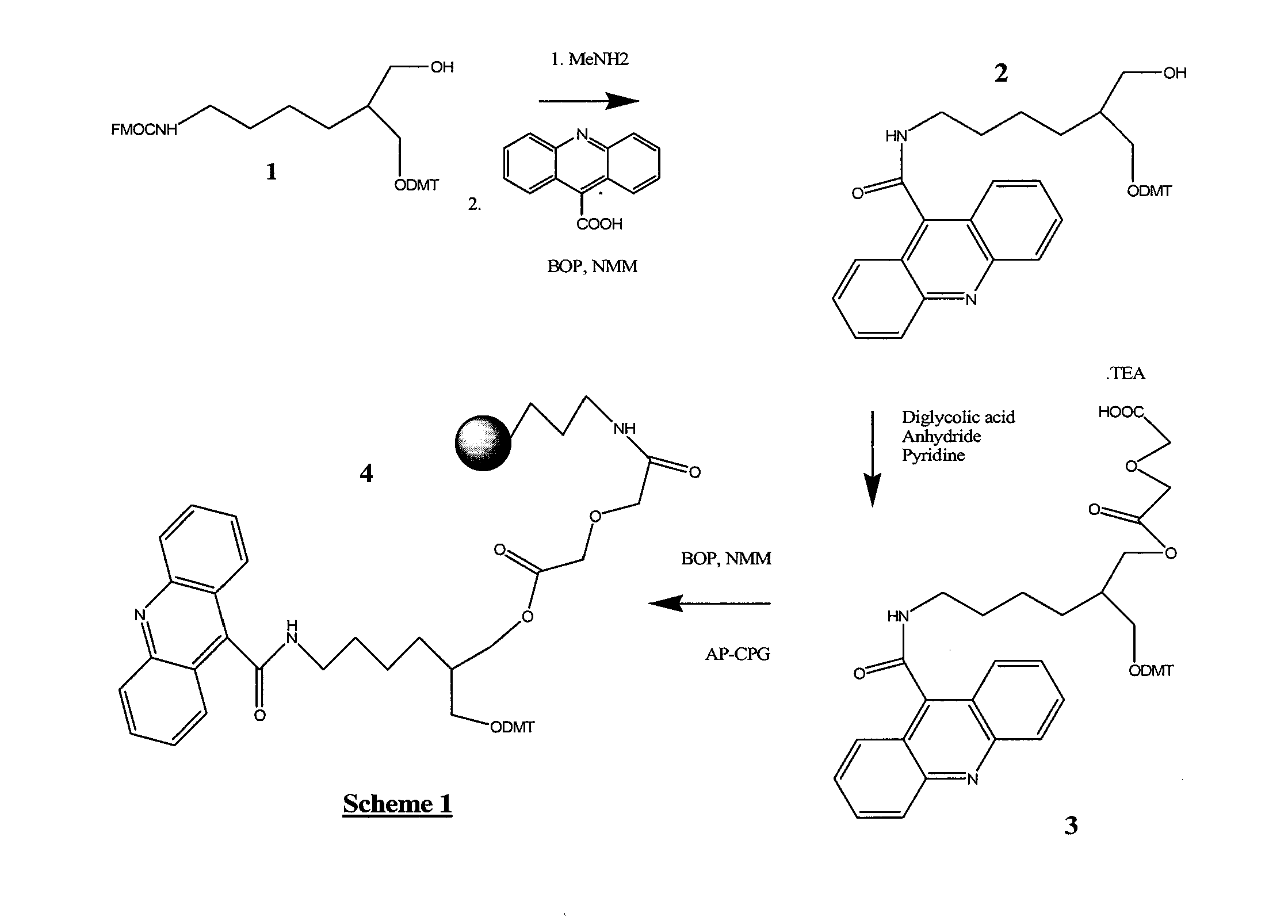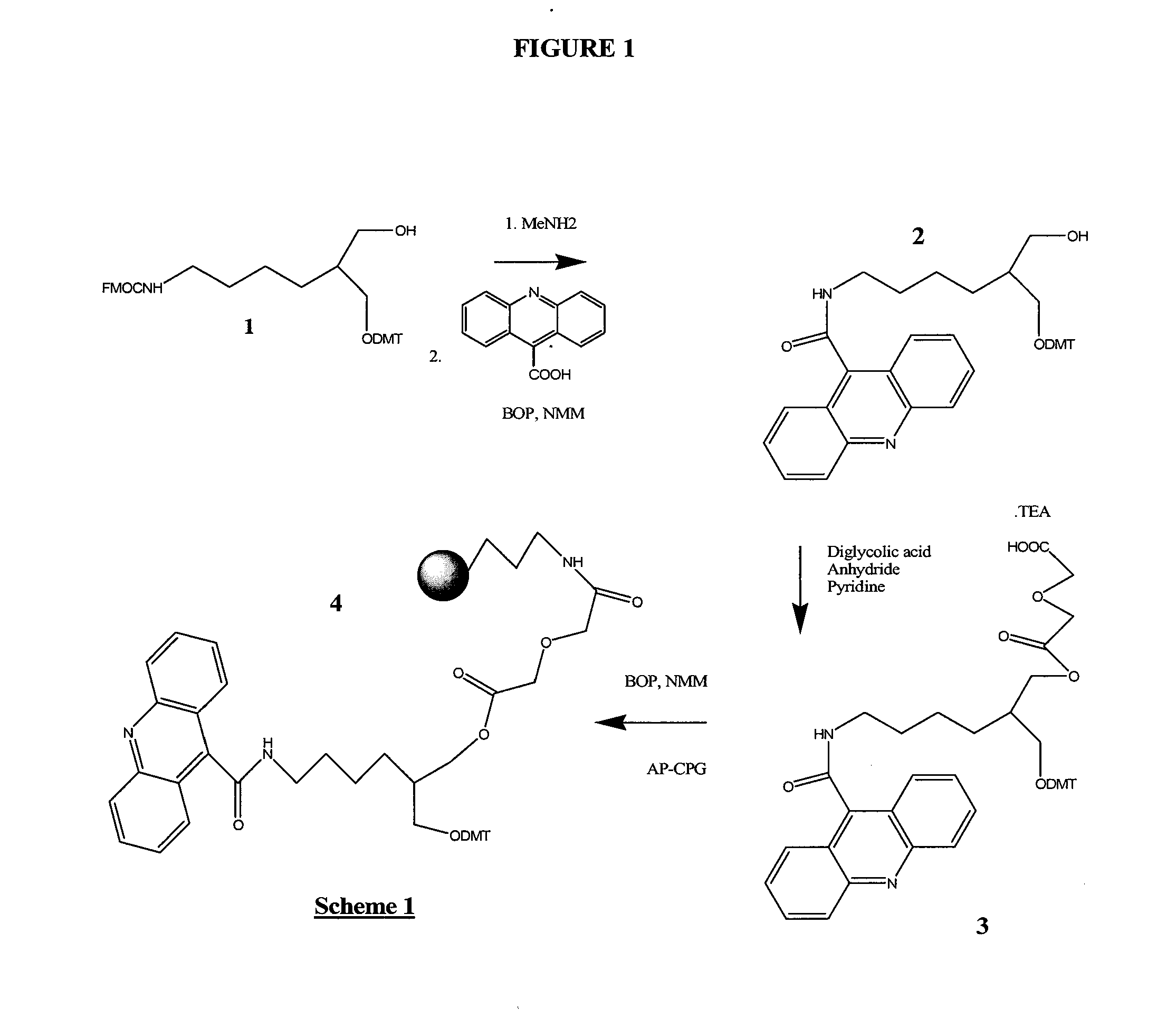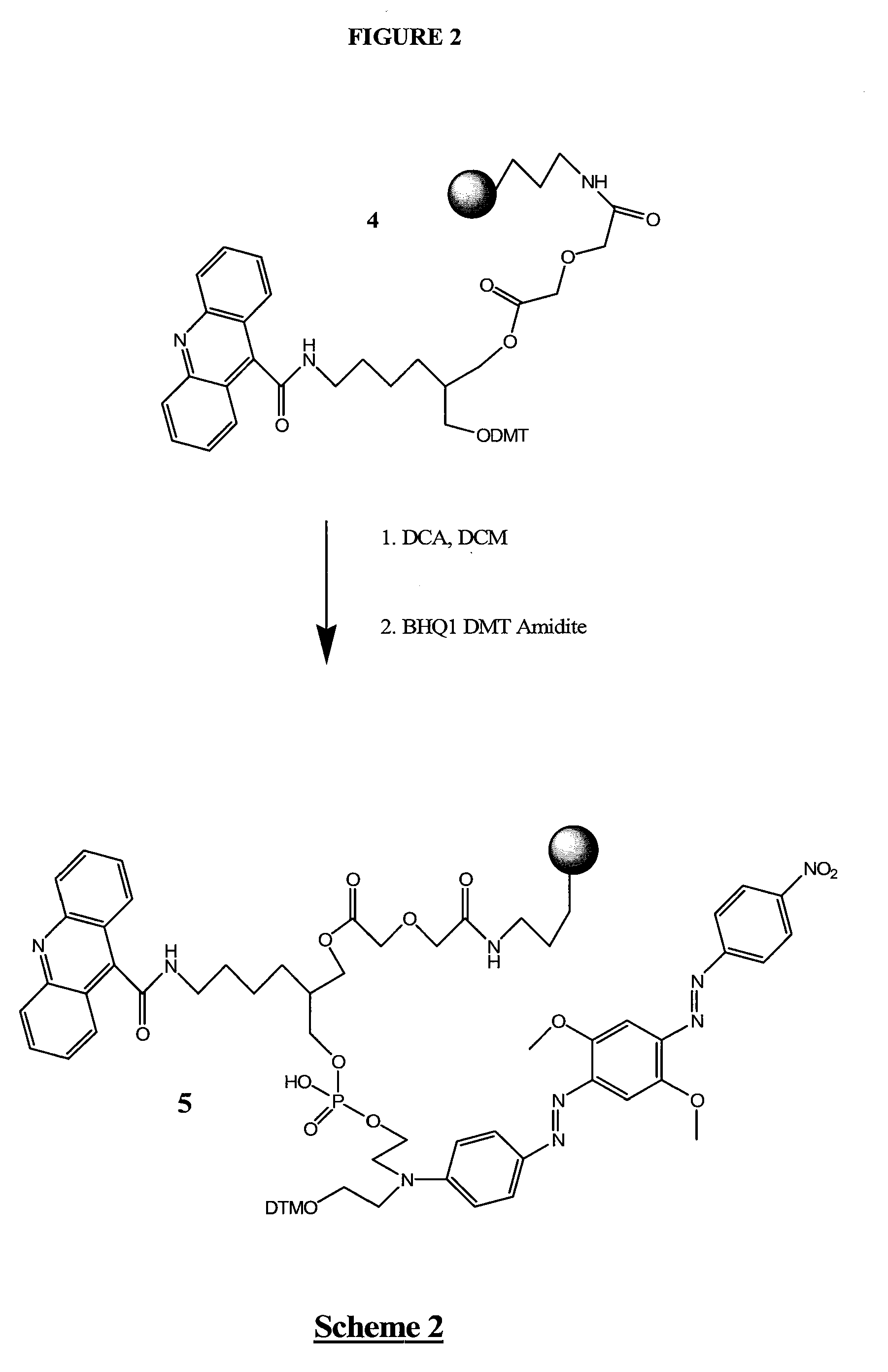Stabilized nucleic acid dark quencher-fluorophore probes
a nucleic acid and fluorophore technology, applied in the direction of disazo dyes, organic chemistry, biochemistry apparatus and processes, etc., can solve the problems of restricting nucleic acid sequences and significant complicating so as to facilitate interaction, restrict nucleic acid sequences, and simplify the design of probes
- Summary
- Abstract
- Description
- Claims
- Application Information
AI Technical Summary
Benefits of technology
Problems solved by technology
Method used
Image
Examples
example 1
Synthesis of BHQ1-Plus CPG
[0248]1-O-DMT-2-(N-Fmoc-4-aminobutyryl-1,3-propane diol 1 (FIG. 1) was prepared according to Nelson, et al., U.S. Pat. No. 5,942,910 (1999), except that a mixture of THF, water and Na2CO3 was used (instead of DMF) during the Fmoc addition step leading to 1. After purification by column chromatography, the Fmoc group of 1 was removed with methylamine in ethanol, and after rigorous removal of the methylamine by co-evaporation with pyridine, BOP activated 9-acridinecarboxylic acid was added in DMF. The resulting 1-O-DMT-2-(N-carboxyacridine-4-aminobutyryl)-1,3-propane diol, 2, was isolated by removal of solvents and column chromatography. After further drying by co-evaporation from dry pyridine, diglycolic acid anhydride was added to produce 1-O-DMT-2-(N-carboxyacridine-4-aminobutyryl)-3-O-diglycolate-1,3-propane diol, 3, isolated as its triethylamine salt after column chromatography. 3 was added to aminopropyl CPG, after activation with BOP and NMM, to give D...
example 2
Synthesis of 5′-DMTdU-5-Alkynyl(BHQ1)3′-diisopropyl cyanoethyl phosphoramidite
[0250]
[0251]Starting with 5-iodouridine 6 the compound 9 was made in a 5 step synthesis. First, Sonogashira coupling (JACS 2005, 127, 15071) with propargylamine trifluoroacetamide, copper iodide and tetrakistriphenylphosphine palladium (0) in DMF with triethylamine gave 5-propargyl(trifluoroacetamide) nucleotide 7 in 37% yield after silica chromatography. The nucleoside was dried well and the 5′DMT group was added by using DMT chloride in dry pyridine to give 8 in 87% yield after chromatography. The TFA amine protecting group was removed with methylamine in ethanol, to give 5-propargylamine nucleoside. Next, BHQ1 C3 carboxylic acid was added to the amine nucleoside with BOP and N-methylmorpholine to produce 5′-DMTdU-5-alkynyl(BHQ1) nucleoside 11.
[0252]After drying by evaporation from pyridine, the nucleoside 11 was converted into 5′-DMTdU-5-alkynyl(BHQ1)3′-diisopropyl cyanoethyl phosphoramidite 12 with tet...
PUM
| Property | Measurement | Unit |
|---|---|---|
| width | aaaaa | aaaaa |
| width | aaaaa | aaaaa |
| covalent | aaaaa | aaaaa |
Abstract
Description
Claims
Application Information
 Login to View More
Login to View More - R&D
- Intellectual Property
- Life Sciences
- Materials
- Tech Scout
- Unparalleled Data Quality
- Higher Quality Content
- 60% Fewer Hallucinations
Browse by: Latest US Patents, China's latest patents, Technical Efficacy Thesaurus, Application Domain, Technology Topic, Popular Technical Reports.
© 2025 PatSnap. All rights reserved.Legal|Privacy policy|Modern Slavery Act Transparency Statement|Sitemap|About US| Contact US: help@patsnap.com



